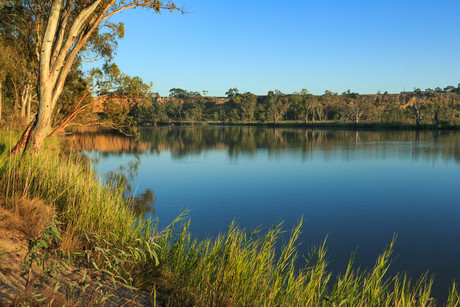A fresh look at microbes in the Murray River

Flinders University researchers are seeking to better understand our vital freshwater system, with the hope of improving future use and environmental management of the Murray and other rivers.
A clean bill of health for the Murray River is of vital importance for South Australia’s agricultural and domestic water supply, yet most scientific examination of microbial movements in water is done in marine environments rather than freshwater river systems. With this in mind, Flinders researchers led by Dr Lisa Dann have presented a new examination of river health with a fresh look at microbial distributions from Murray River water samples.
“Despite their importance, research on freshwater systems has always lagged behind its marine counterpart, so these findings will help bridge a gap in knowledge about microbial ecology,” said Dr Dann, whose work has been published in the journal PLoS ONE.
Microbial distributions had previously been considered homogeneous, with large-scale sampling considered representative of abundant microbial communities over smaller scales. However, it turns out this is not the case, with the Flinders researchers identifying localised areas of heightened microbial abundance (‘hotspots’) and depleted areas (‘coldspots’) only millimetres apart, capturing the scale at which individual microbes interact.
The research shows that these hotspots and coldspots are taxonomically distinct, with 1 µL samples from these hotspots containing an abundance of a single genus, which are called ‘micropatches’. This reveals that strong and extensive taxonomic changes can be found across a few millilitres. As microbial hotspots and coldspots are important microenvironments for nutrient exchange and cellular interactions, understanding their taxonomic make-up will aid further understanding of environmental and microbial diversity, and ecosystem function.
“These findings will help our understanding of microbial communities within this system and hopefully aid in the future management of this river,” said Dr Dann. “The findings of this paper are relevant to a variety of fields, such as industry, technology and disease research, as it demonstrates the extent to which microbial communities structure themselves.”
Further research by Dr Dann is examining the way microbes invade different environments, and assessing the scale at which microbes sort themselves across subsurface groundwater systems, surface marine and freshwater environments, and the human oral microbiome.
Colon cancer DNA in blood can guide chemo decisions
A simple blood test could change how doctors decide which patients with colon cancer need...
Non-invasive blood test helps rule out oesophageal cancer
Designed and developed in Australia, the PromarkerEso test is designed to offer a quick,...
Taste-based flu test enables rapid diagnosis
The diagnostic tool consists of the sensor molecule thymol and a virus-specific sugar building...





